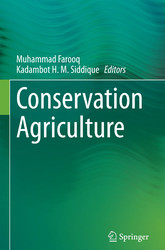| Главная » Публикации » Почвозащитное ресурсосберегающее земледелие » Книги |
Категории публикаций
| Книги [9] | Руководства [16] | Постеры [11] |
| Презентации [39] | Периодические издания [1] | Листовки [10] |
| Статьи [1] |
Conservation Agriculture
Conservation agriculture is widely recognized as a viable approach to creating a sustainable agriculture. It is a resource-saving agricultural production system that aims to achieve production intensification and high yields while enhancing the natural resource base through compliance with four interrelated principles viz. minimal soil disturbance, permanent residue cover, planned crop rotations and in-tegrated weed management, along with other good production practices of plant nutrition and pest management. Conservation agriculture is environment friendly and requires less fuel, result-ing in lower emissions of carbon dioxide—one of the gases responsible for global warming. In addition, conservation agriculture is very effective in reducing soil erosion. A wide range of other environmental benefits accrue in conservation agri-culture, including reduced run-off, improved nutrient cycling, reduced soil degrada-tion, reduced soil and water pollution and enhanced activities of soil biota. Although several papers and conference proceedings are available on the sub-ject, a comprehensive textbook on conservation agriculture was lacking. This book is a timely effort to fill the gap. The book describes various elements of conserva-tion agriculture, highlights the associated breeding and modeling efforts, analyses the experiences and challenges in conservation agriculture in different regions and proposes some pragmatic options and new areas of research in this very important area of agriculture. | |
|
29.05.2019, 13:10
Категория: Книги
|
|
| |
| Просмотров: 657 | Загрузок: 364 |
| Всего комментариев: 0 | |

